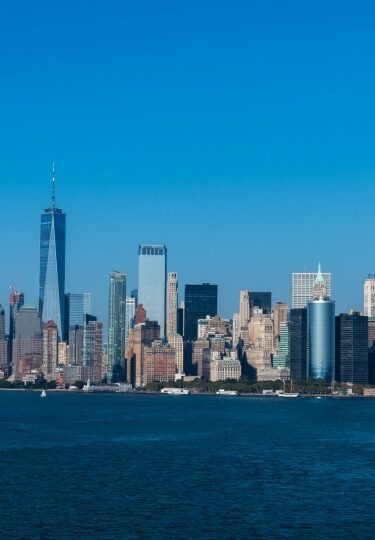Every city grows and changes to meet the needs of its people. But what the most modern cities in the world have in common is an energy, and style that is a constant. Behind the modern architecture, or the ebb and flow of economies, they remain places people want to be.
From London to Tokyo, New York to Stockholm, they are recognized as among the world’s great cities. Those who live in them love them, and everybody wants to visit them at least once in their lifetime.
Here is a list of some of the most modern cities in the world to explore.
Tokyo, Japan
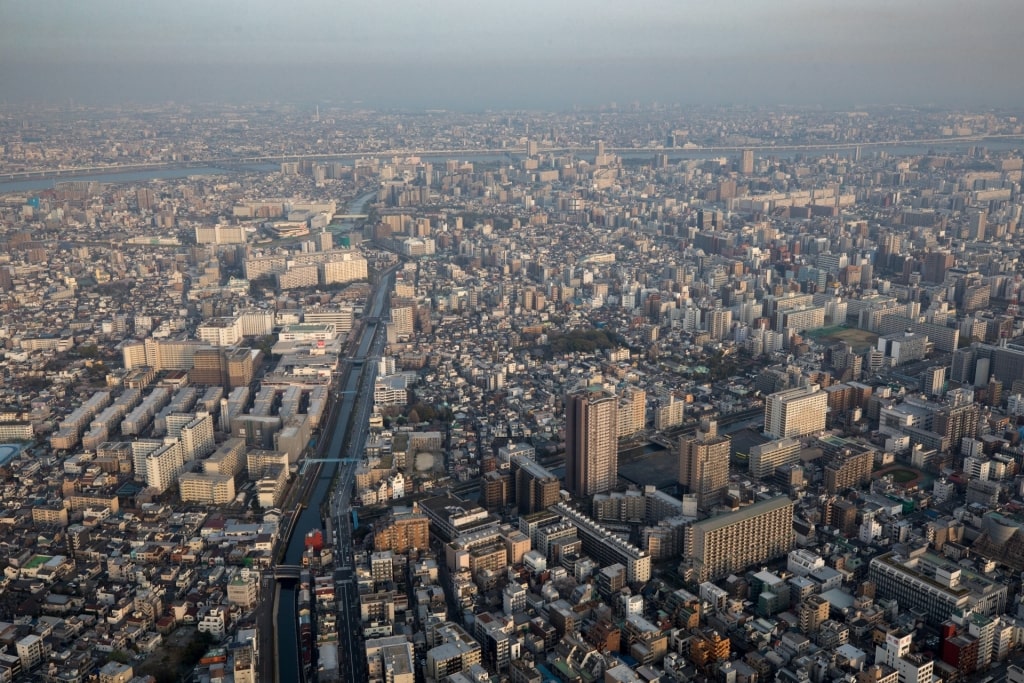
Tokyo, Japan
If a film director needs a futuristic setting for a sci-fi movie, it seems almost obligatory to use Tokyo as a backdrop. The neon lighting, amazing skyscraper skyline, and sparkling modern infrastructure all look mesmerizing on screen.
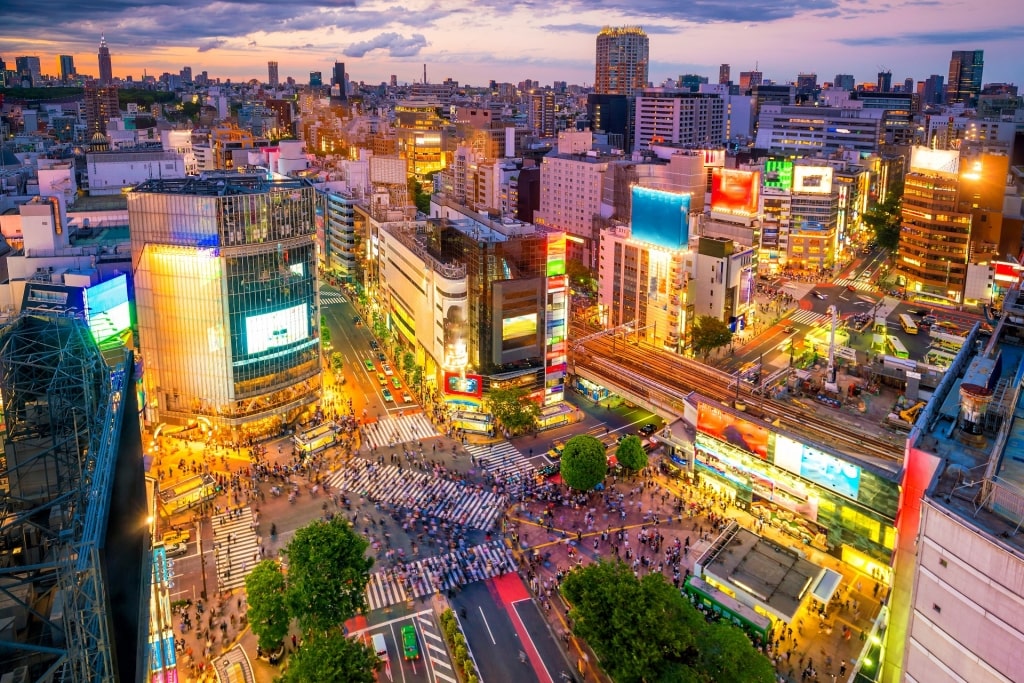
Shibuya Crossing in Tokyo, Japan
To walk though Tokyo can feel as if you are experiencing the future. You meet high tech everywhere, from robots greeting you in department stores, to vending machines dispensing almost everything you imagine.
Towering local electronics stores will overwhelm you with the gadgets on show. And the fashion you see in shops, or around you in Tokyo’s popular neighborhoods, can be an equal overload for the senses.
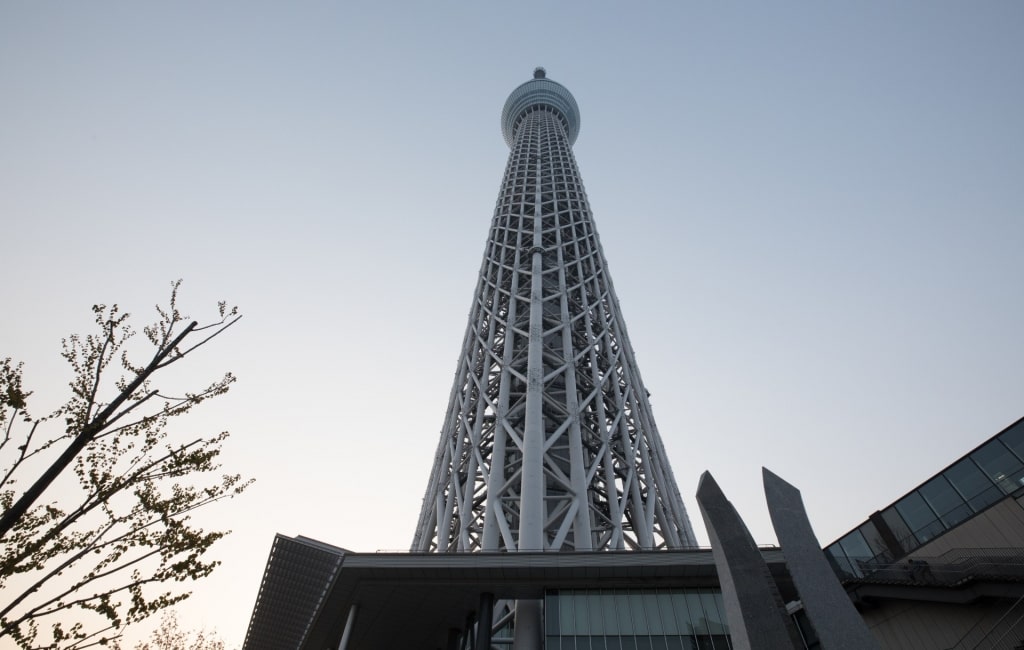
Tokyo Sky Tree in Tokyo, Japan
Take in an overview from the Tokyo Sky Tree, Tokyo Tower or one of the cafés overlooking the pedestrian-filled Shibuya Crossing. One of the most futuristic cities in the world, Tokyo never stands still.
Singapore
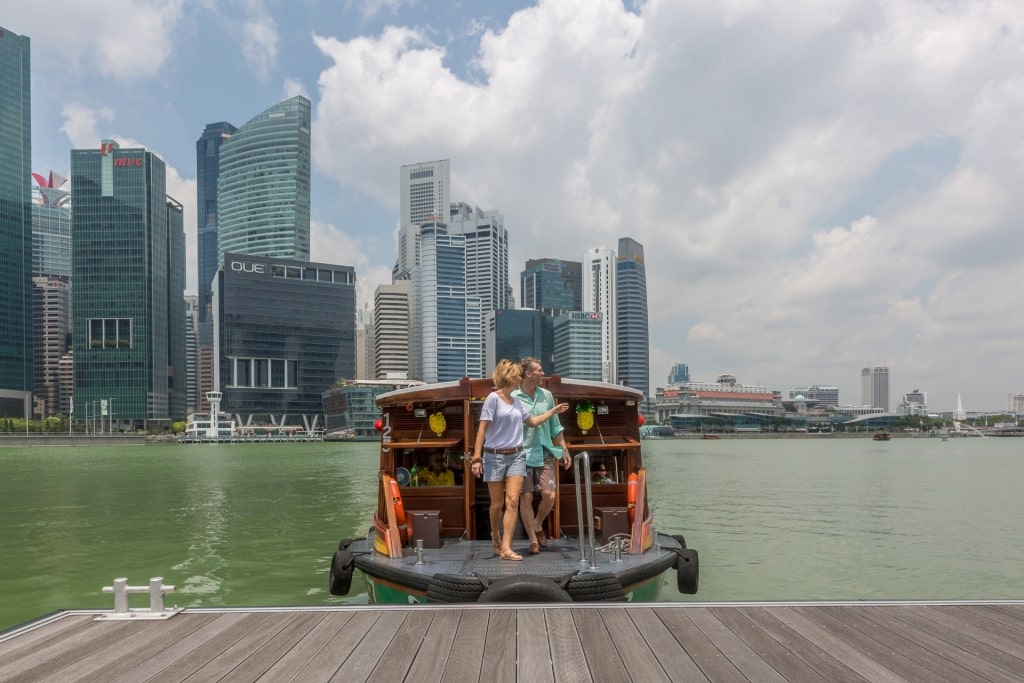
Singapore
It’s amazing how Singapore has boomed since the city-state gained its independence in 1965. Now one of the richest cities in the world, it continues to grow ever upwards on its small island homeland.
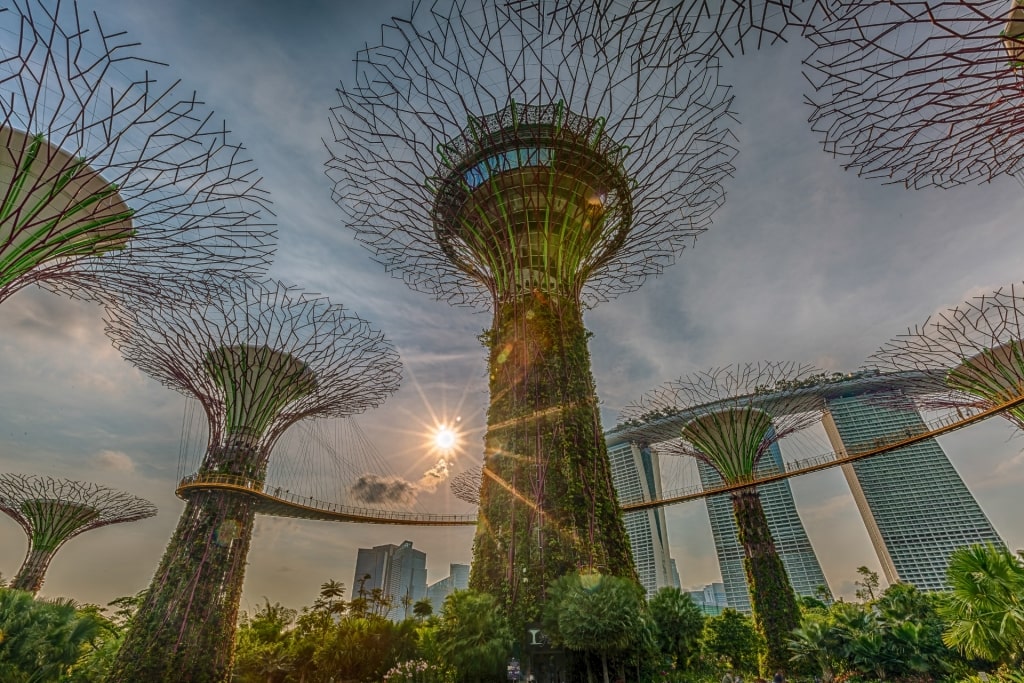
Gardens by the Bay, Singapore
Amid the many skyscrapers are plenty of green spaces such as the beautiful Gardens by the Bay. Walk the Marina Bay Waterfront to see one of the best skylines in the world, or be a part of it in the Sands SkyPark Observation Deck.
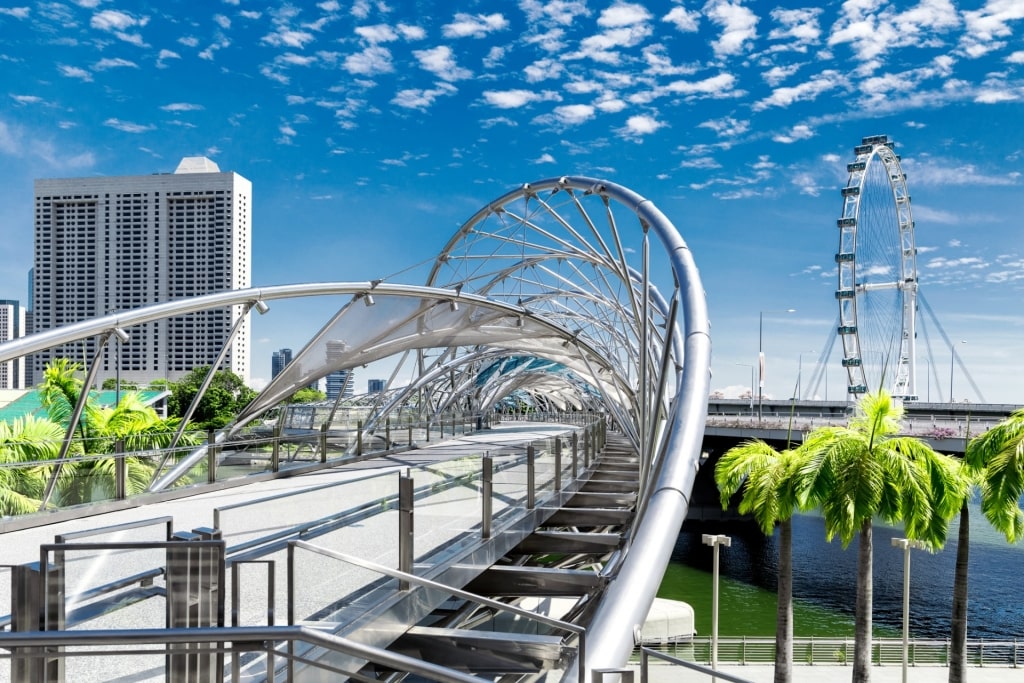
Helix Bridge, Singapore
Don’t miss the neon-lit Helix Bridge, with its four viewing platforms. There’s even more fun to be had on Sentosa Island, where you can find casinos, beach resorts, and zip-lines.
The “Lion City” has also preserved its past in ancient temples, shophouses, and food markets. To add to the local passion for eating well, the art scene is now booming.
Read: Singapore Vs. Hong Kong: Which Should You Visit?
Dubai, United Arab Emirates
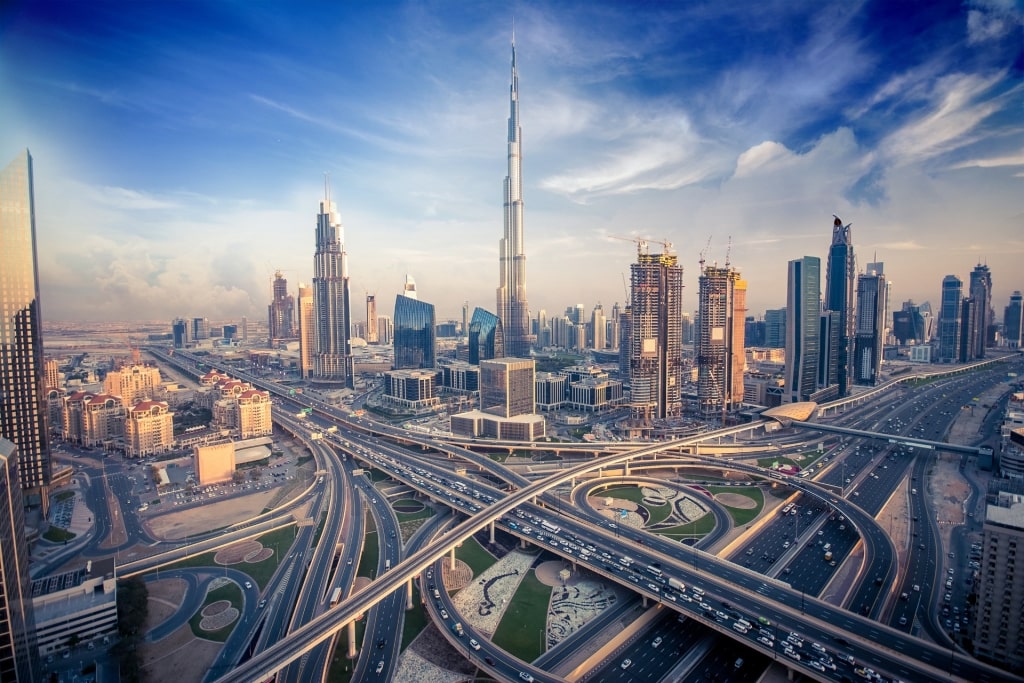
Dubai, United Arab Emirates
Does Dubai need an introduction as one of the world’s most modern cities? Tom Cruise hanging off the Burj Khalifa, the world’s tallest building, provided a picture worth thousands of words on that.
Superlatives include the Dubai Mall, housing 1,200 stores to make it the world’s largest mall. The world’s largest airport, the world’s largest artificial island… the list goes on.
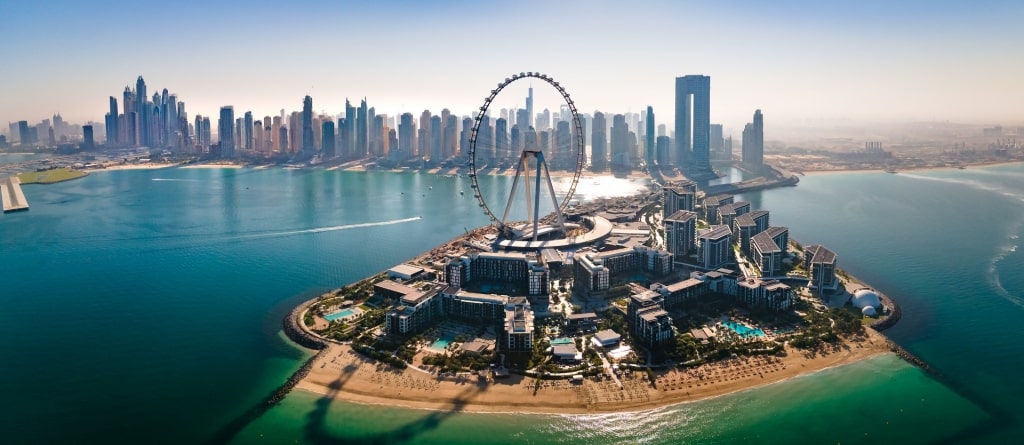
Dubai Marina, United Arab Emirates
You can also visit the world’s largest flower garden, The Miracle Garden, or what claims to be the world’s most luxurious hotel, the sail-shaped Burj Al Arab. Then relax in Dubai Marina, a canal district built along the shore of the Persian Gulf.
The Dubai 2040 Urban Master Plan aims to make Dubai the world’s best city to live in. Building on the existing green spaces, and beachfront, 60 percent of Dubai’s area will be nature reserves.
Hong Kong
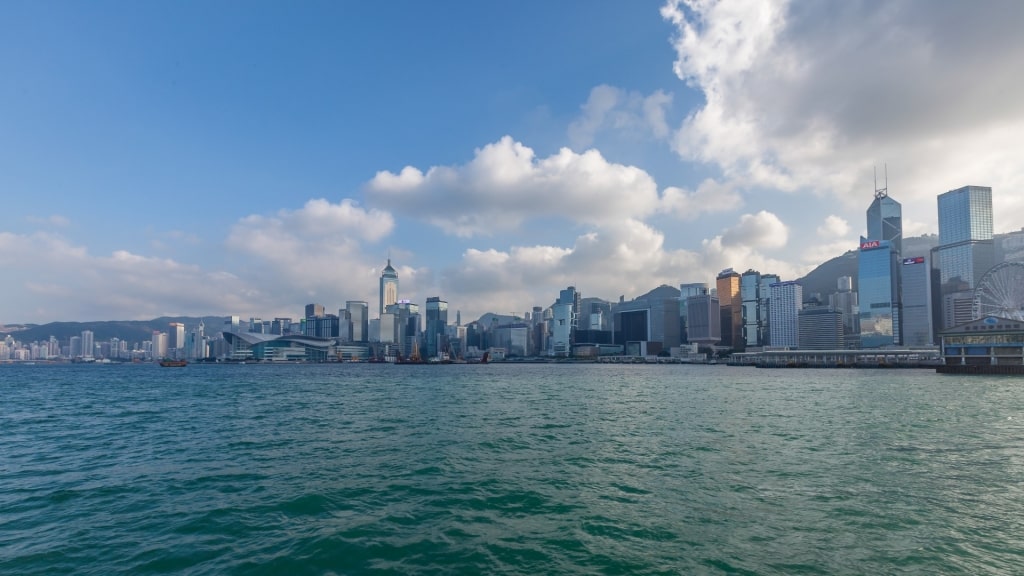
Hong Kong
Did you know that more people in Hong Kong live above the 15th floor than anywhere else in the world? This is a city that has more tall buildings than Dubai, New York, or Chicago.
It’s not just the height—and density—of its buildings that makes Hong Kong so futuristic. The transit system is highly efficient, coping with almost 11 million trips a day by buses, rail, and ferries.
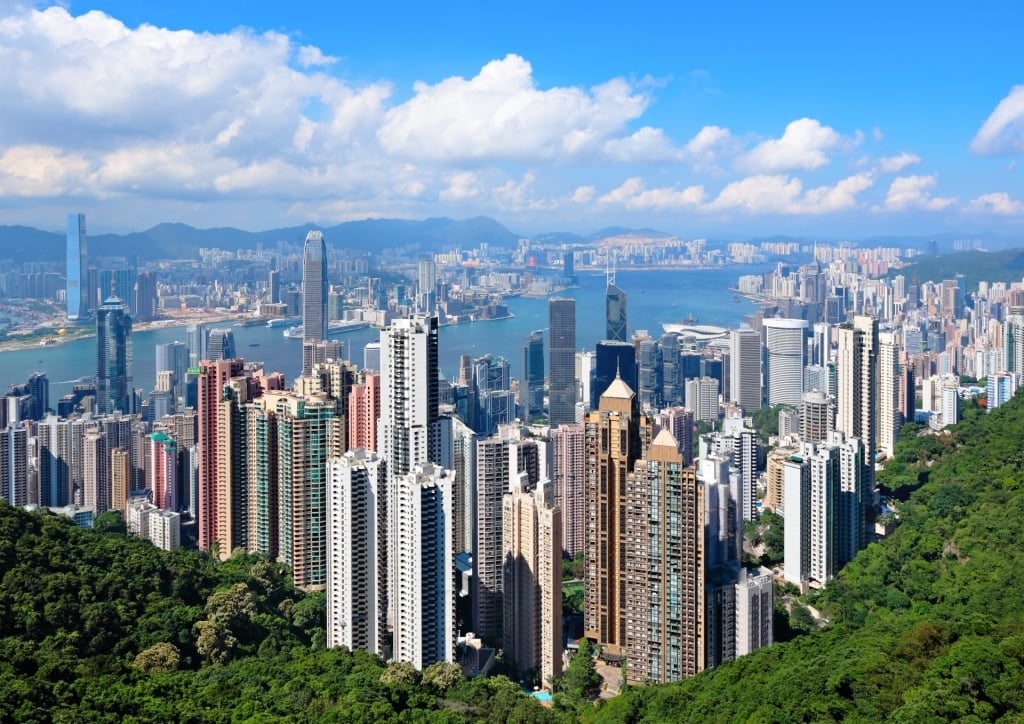
Victoria Peak, Hong Kong
The view from Victoria Peak of Hong Kong and Kowloon is rightfully world famous. Get closer by walking the Kowloon-side Tsim Sha Tsui Promenade, with its Avenue of Stars including Jackie Chan and Bruce Lee.
See more of one of the most modern cities in the world in the new Tai Kwun complex with its international art gallery, shops and restaurants. In Kowloon, the emerging West Kowloon Cultural District blends art, dining, retail, and entertainment.
Read: 3 Days in Hong Kong
Amsterdam, Netherlands
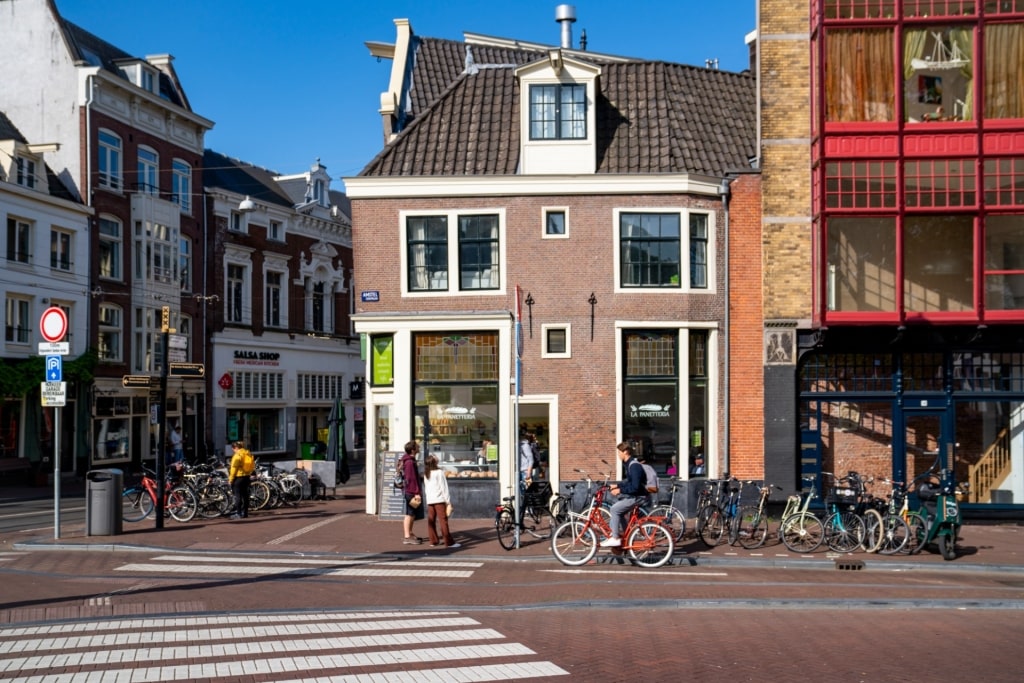
Amsterdam, Netherlands
One of the most beautiful cities in the world, Amsterdam’s sense of modernity comes as much from its social advances as its architecture. The busy trams and widespread biking culture illustrate a planet-friendly approach to future transit.
The city’s liberal philosophy is controversial but undoubtedly ground-breaking. Quality housing for everyone, and a strongly green environmental policy are other less familiar aspects of life here.
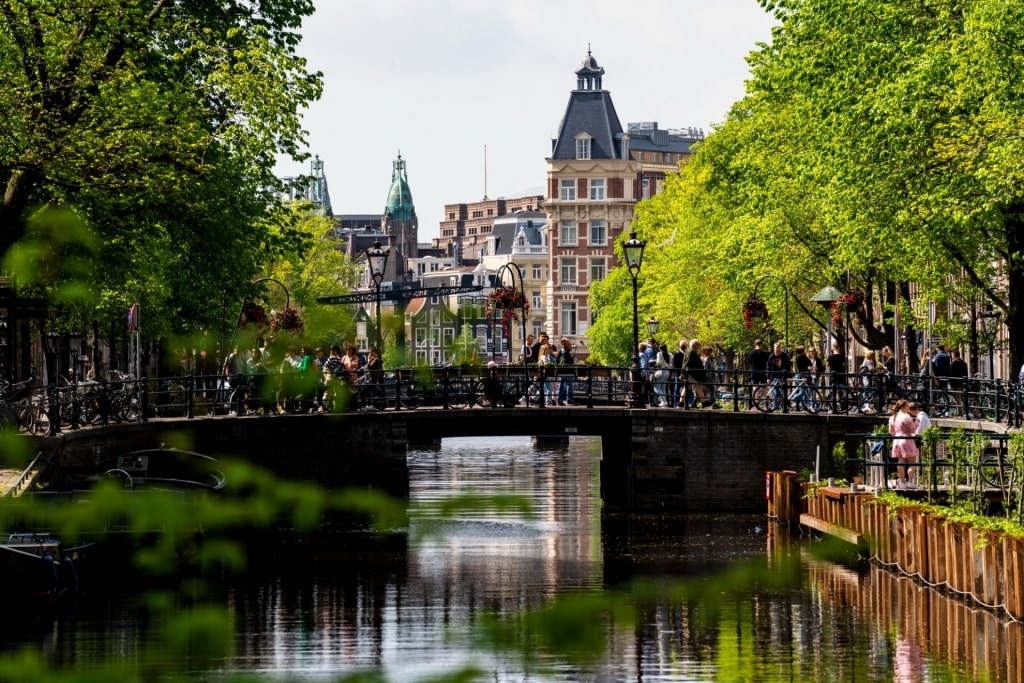
Amsterdam Canal, Netherlands
Amsterdam’s historic center, with its concentric rings of canals, is a familiar sight. Across the IJ, the city’s waterfront, is the booming area of Amsterdam-Noord.
Here’s where to find showcases of modern architecture, innovative cafés, and trending art spaces in Amsterdam. Central to this is the NDSM Wharf, a former industrial area now a hub for artists, and start-ups.
New York City, NY
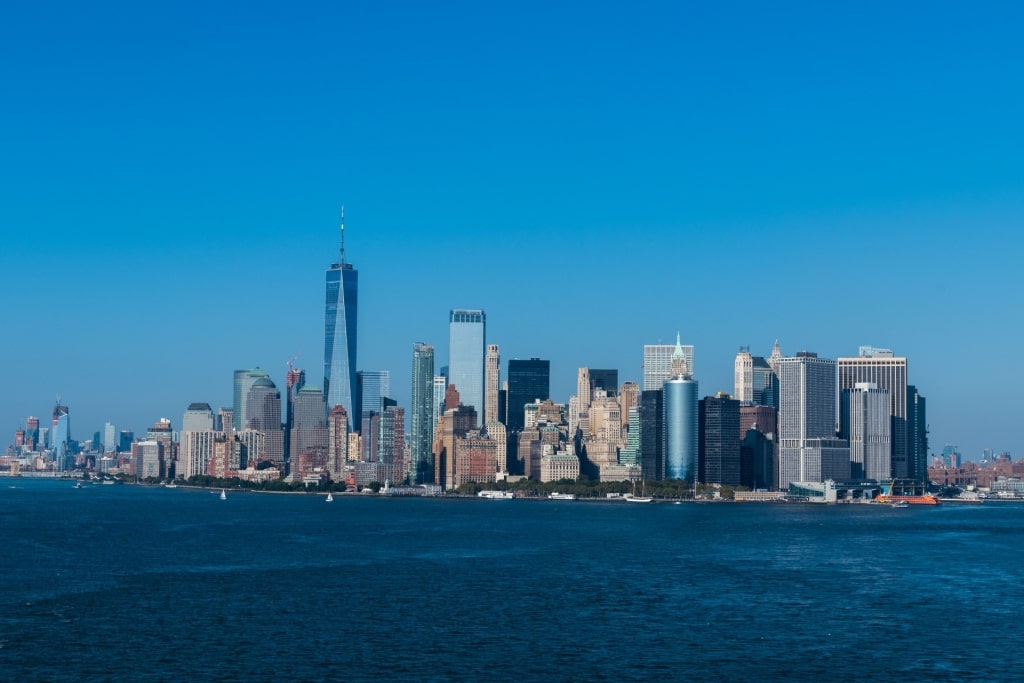
New York City
With its early 20th century skyscrapers, New York practically defined what a modern city should look like. The Empire State Building, The Chrysler Building, and 30 Rockefeller Plaza all left their mark on architecture.
That energy continues in more modern buildings such as Bjarke Ingels’ VIA57 West, Frank Gehry’s New York by Gehry, and David Childs’s One World Trade Center. The Brooklyn Bridge, and the George Washington Bridge are also major landmarks.
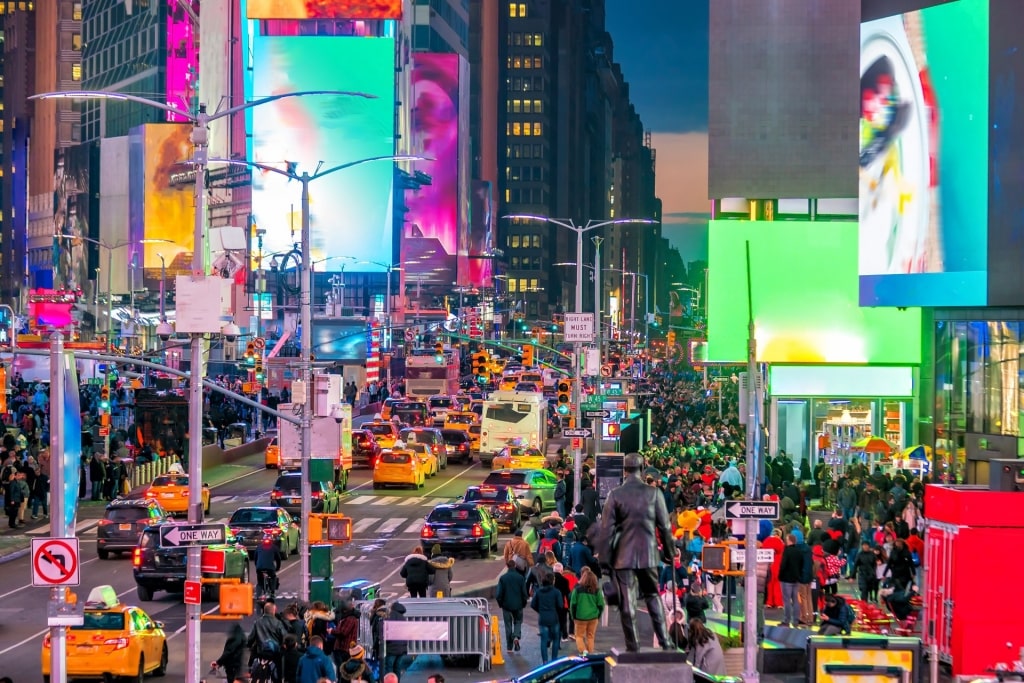
Times Square in New York City, NY
You can almost touch the “Big Apple” energy in Times Square. Surrounded by bright signage, not to mention people from all over the world, you are in the heart of the urban experience.
Keep up to date with the latest in art by visiting The Met, MoMA, and the Guggenheim. Then keep your finger on the cultural pulse at a Broadway show, or the very latest fashionable restaurant.
London, UK
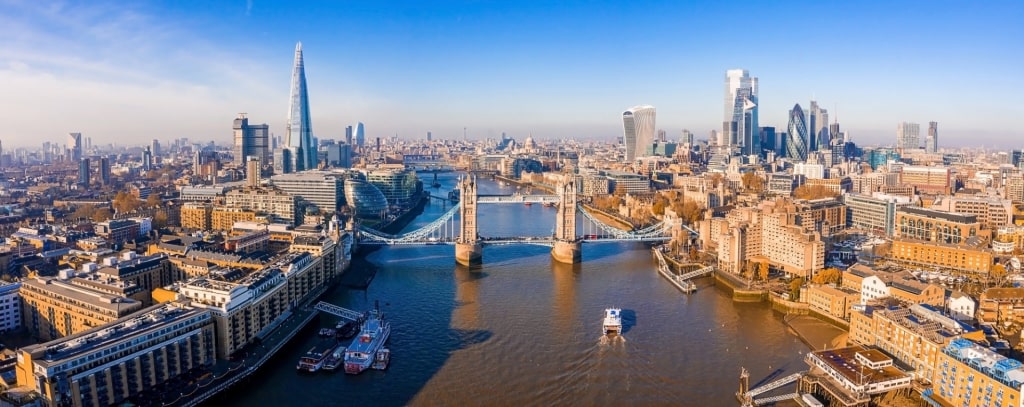
London, UK
London has Roman temples, medieval churches, and streets lined with graceful buildings from the Georgian era of the late 19th century. All those layers of history show it’s a city that has always changed, and adapted.
Its present skyline showcases many of the world’s most famous architects. Norman Foster’s “Gherkin”, Renzo Piano’s “Shard”, and Zaha Hadid’s “London Aquatic Center” have all been ground-breaking.
This was the city that had the world’s first underground railway (1863), its first international airport (1920), and its first ATM (1967). It’s also the city where the first magazine, first circus, and first roller skates were all launched into the world.
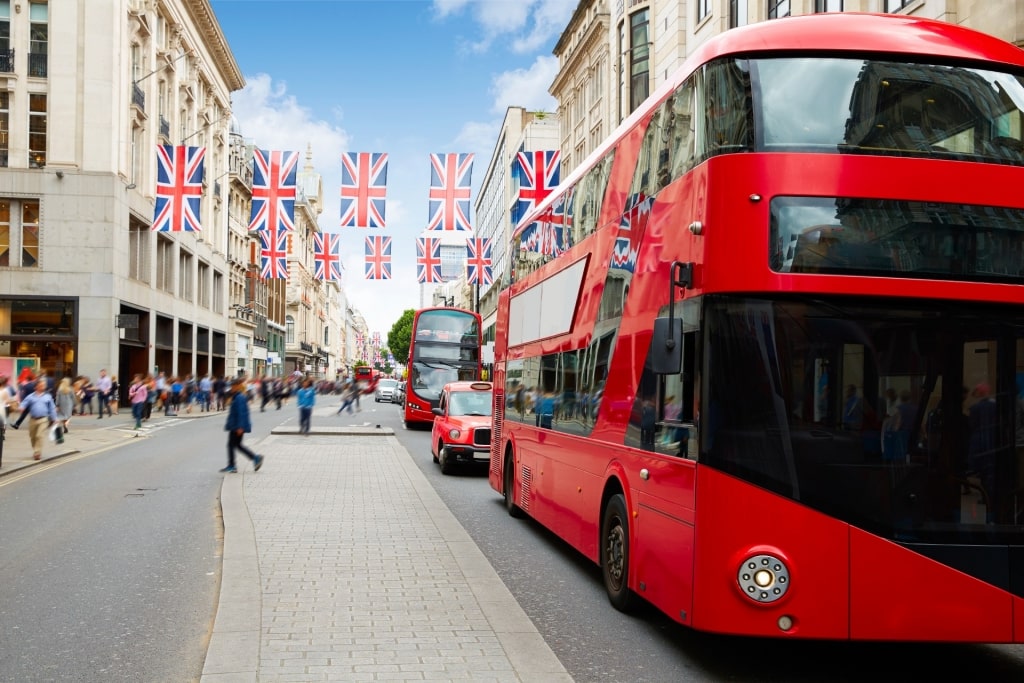
Oxford Street in London, UK
That invention of what was modern in its time continues to this day. Explore Oxford Street, Soho and the West End to see why London’s actors, artists, musicians, chefs, and fashion designers are still famous around the world.
Seattle, Washington
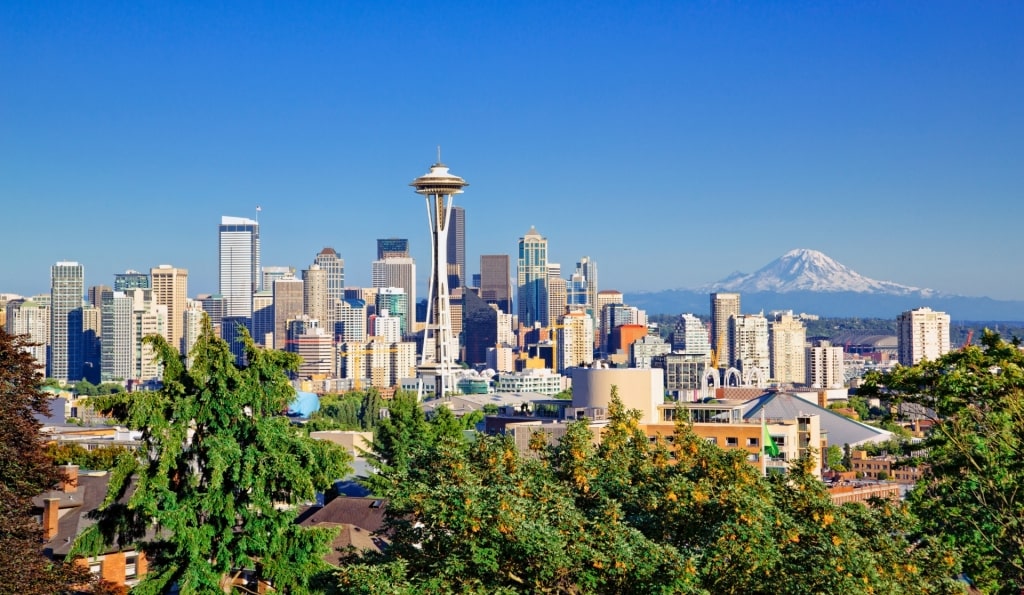
Seattle, Washington
The fastest-growing major U.S. city in 2020, Seattle’s symbol is the Space Needle, built for the 1962 World’s Fair. The Seattle Center Monorail, also opened for that expo, links Seattle Center to downtown’s Westlake Center.
Along the way, you’ll pass through skyscrapers that Seattle is known for, and sights such as Frank Gehry’s Museum of Pop Culture. In Pike Place Market, you’ll find the very first Starbucks café, and lots of delicious seafood.
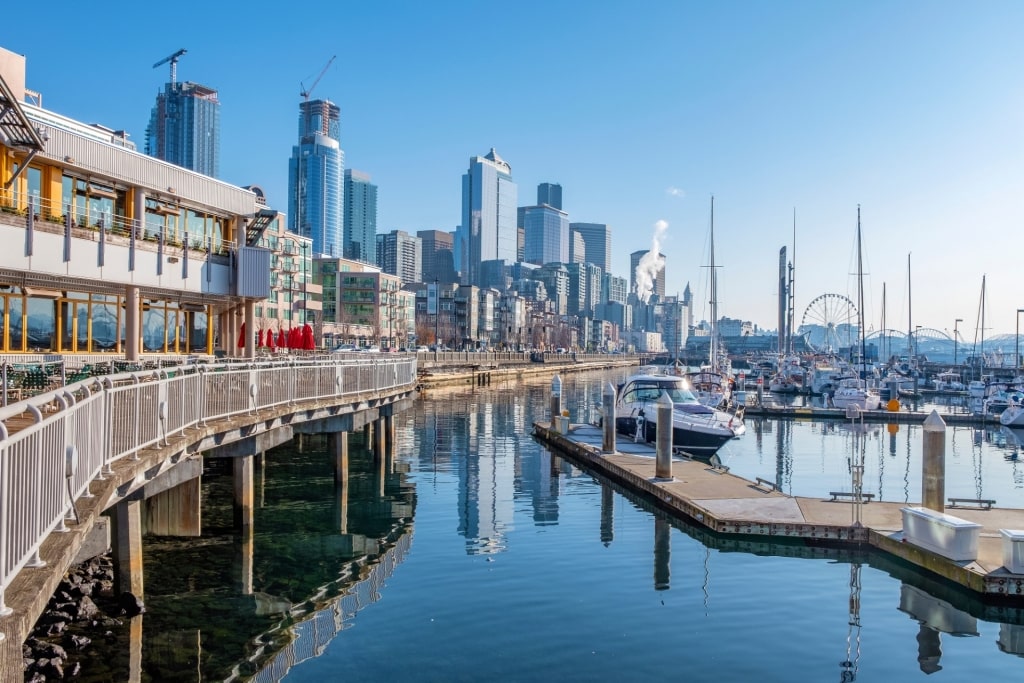
Downtown Seattle, Washington
The market is at the heart of Seattle’s Downtown, where you’ll also find sights such as the Seattle Art Museum. Don’t miss the Rem Koolhaas–designed Central Library, with its tenth floor views.
Seattle is the home of Amazon, Boeing, and Microsoft. You can find out more about the city’s appeal at The Future of Flight Aviation Center, and the Museum of History & Industry (MOHAI).
Vancouver, Canada
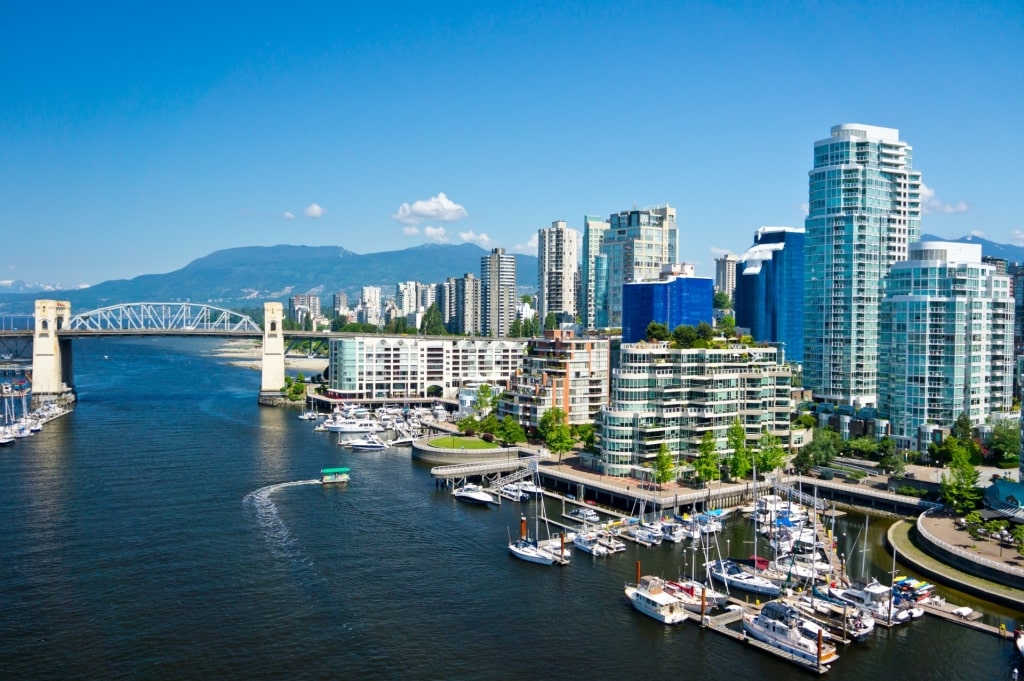
Vancouver, Canada
Vancouver has almost everything for the perfect modern city. Its Pacific Ocean setting, backed by high mountains, adds natural beauty to a downtown area full of exciting buildings.
Chief among them for visitors are R. Buckminster Fuller’s Science World, dating to the 1986 World Fair, and the “flying saucer” Vancouver Lookout. Take the Skyride Aerial Tram to the top of Grouse Mountain for an overview of Vancouver.
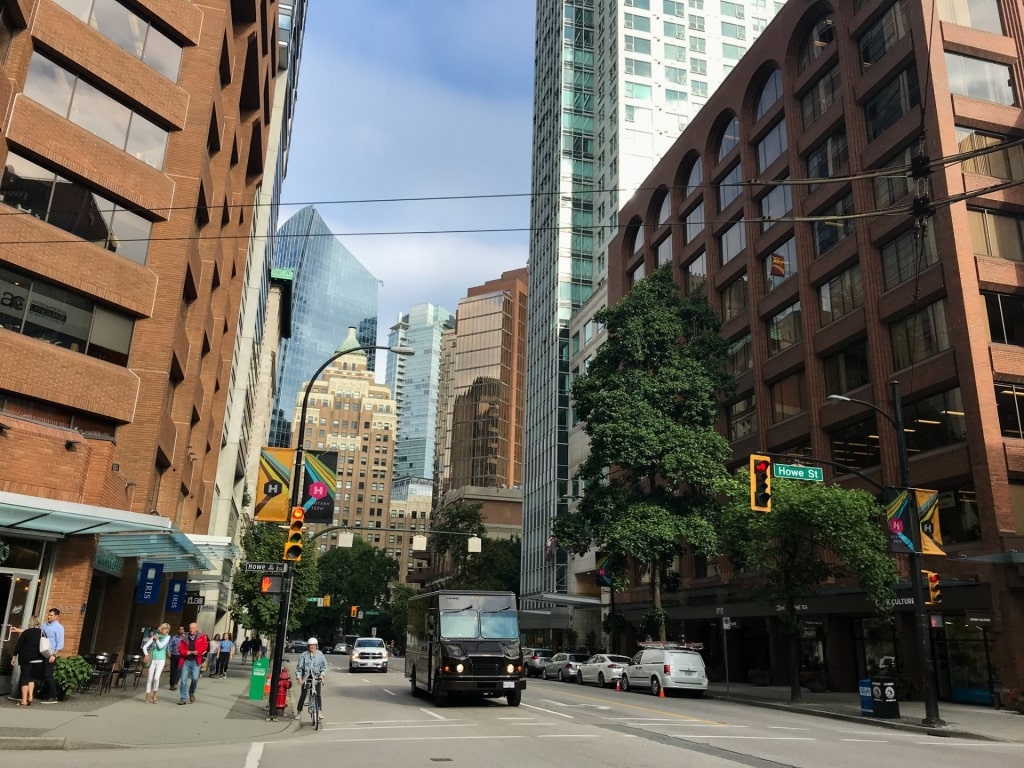
Vancouver, Canada
Vancouver is one of the world’s most cyclist-friendly cities, with an integrated public transport network. Even the most novice cyclist will enjoy experiencing Vancouver’s nature through the beautiful waterside Stanley Park.
The cutting-edge food scene can be explored in Gastown, and Chinatown. Yaletown, the historic warehouse district, is another area that’s now booming with restaurants, bars, and shopping.
Stockholm, Sweden
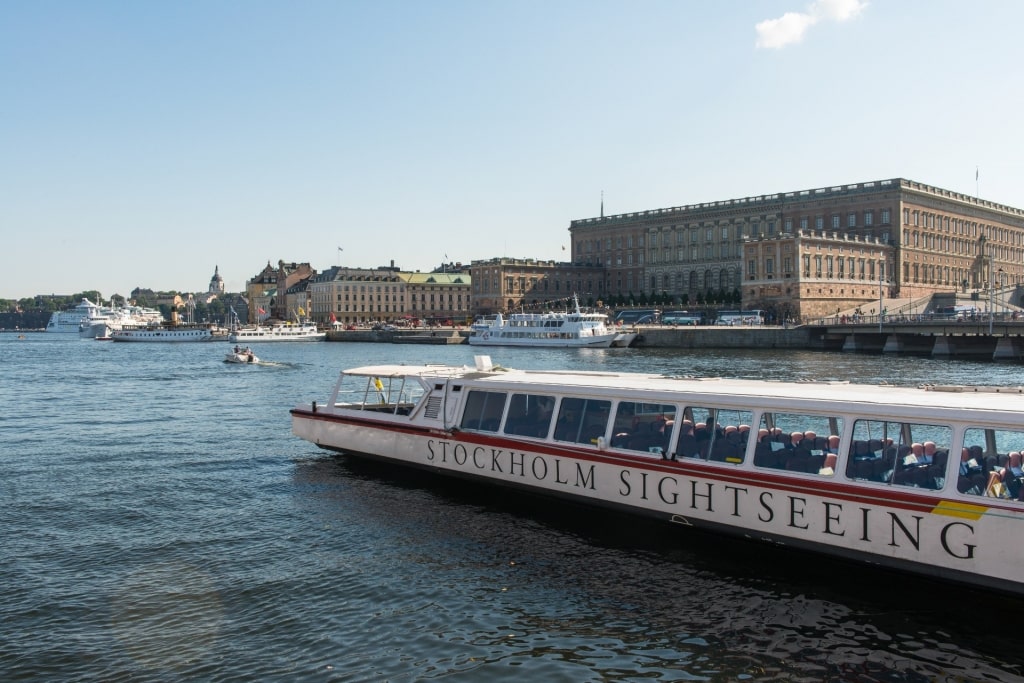
Stockholm, Sweden
One of the most beautiful countries in Europe, Sweden is noted for its contribution to Scandinavian design. Stockholm, its capital, reflects that in everything from its architecture to its fashion and furniture shops.
This is not a city of skyscrapers, however, but one with more of a feel for energy-efficiency and ecology. You’ll see this in modern buildings such as Artipelag, the design museum, and Avicii Arena, the world’s largest spherical building.
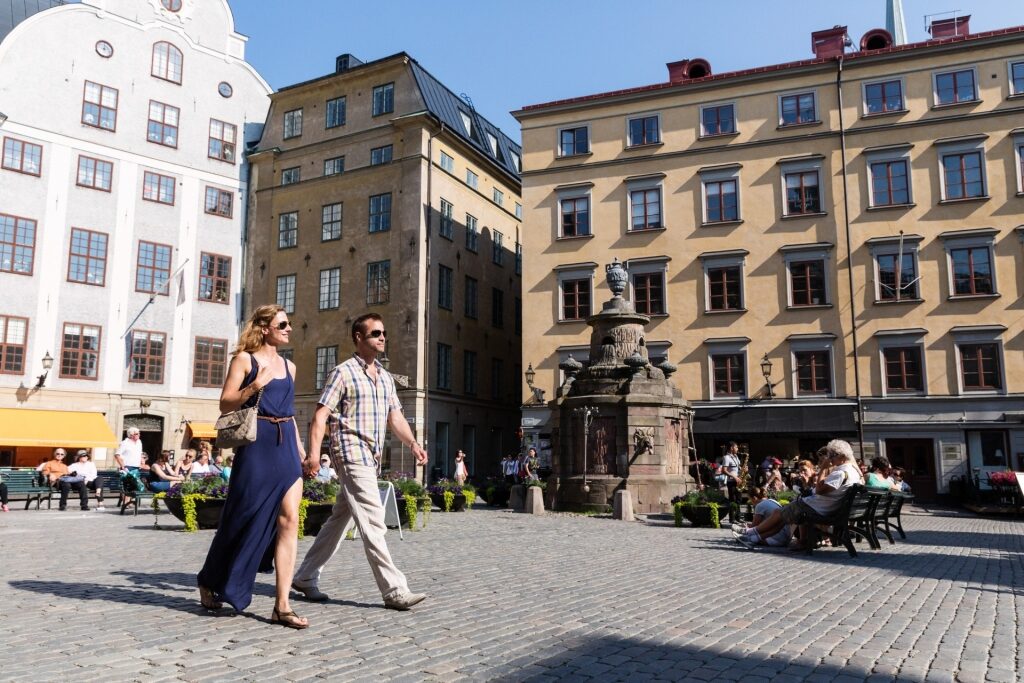
Gamla Stan in Stockholm, Sweden
Gamla Stan, the old town of Stockholm, shows that this design aesthetic is not new. Its sights include Stockholm Cathedral, the Nobel Prize Museum, and the baroque Royal Palace.
In Ostermalm, you’ll find a more modern area, with the Sturegallerian mall being a showcase for the fashion and design that Sweden is known for. The beautiful brick Saluhall food market, and the unique Swedish History Museum are major highlights.
Helsinki, Finland
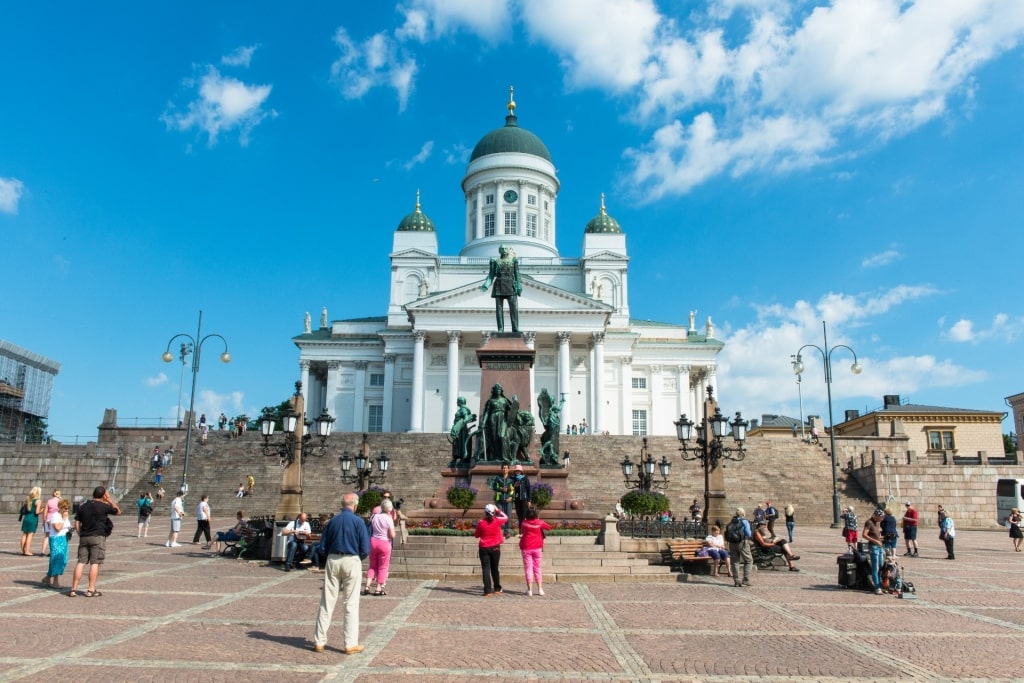
Helsinki Cathedral, Finland
Finland’s capital is overlooked by the neoclassical Helsinki Cathedral on Senate Square. Strikingly modern when it was completed in 1852, its landmark steps use the same light-colored granite that gives Helsinki the nickname of “The White City”.
More modern buildings include the Art Nouveau Central Railway Station, and the contemporary Helsinki University Library. Temppeliaukio Church—the “Church of the Rock”, and the shining glass Helsinki Music Centre are other architectural highlights that Finland is known for.
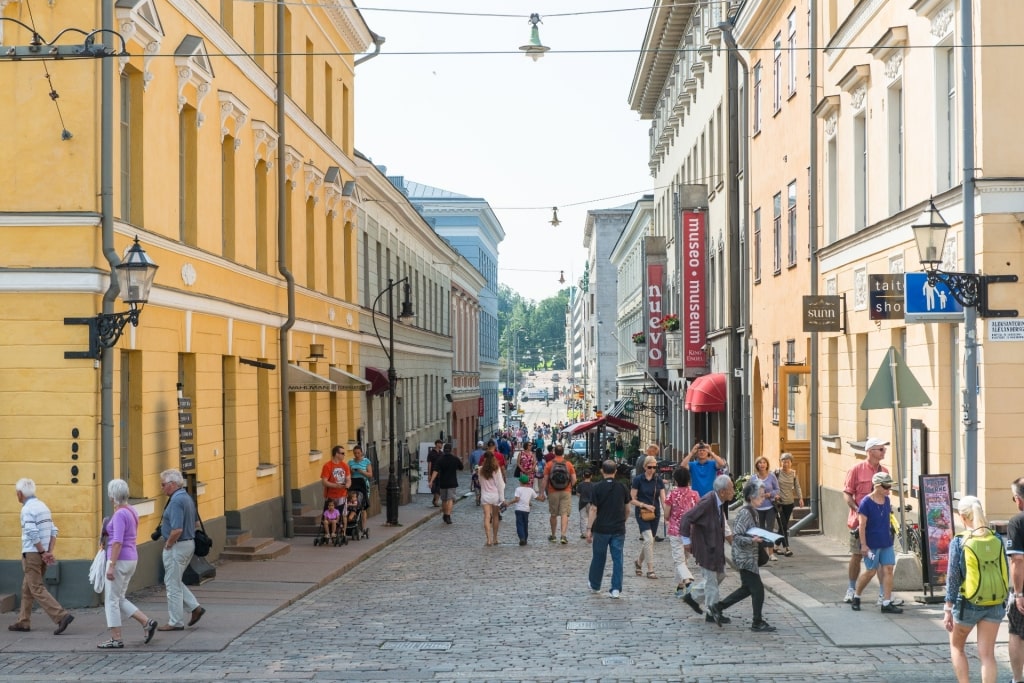
Helsinki, Finland
Helsinki was recognized by Unesco as a “City of Design” in 2014. Besides its buildings, its citizens have access to free public wifi, eight universities, and liberal social policies.
For the visitor, going to American architect Steven Holl’s Museum of Contemporary Art (Kiasma) is one of the best things to do in Helsinki. The Sibelius Monument, another popular sight, sits in one of the city’s many beautiful parks.
Berlin, Germany
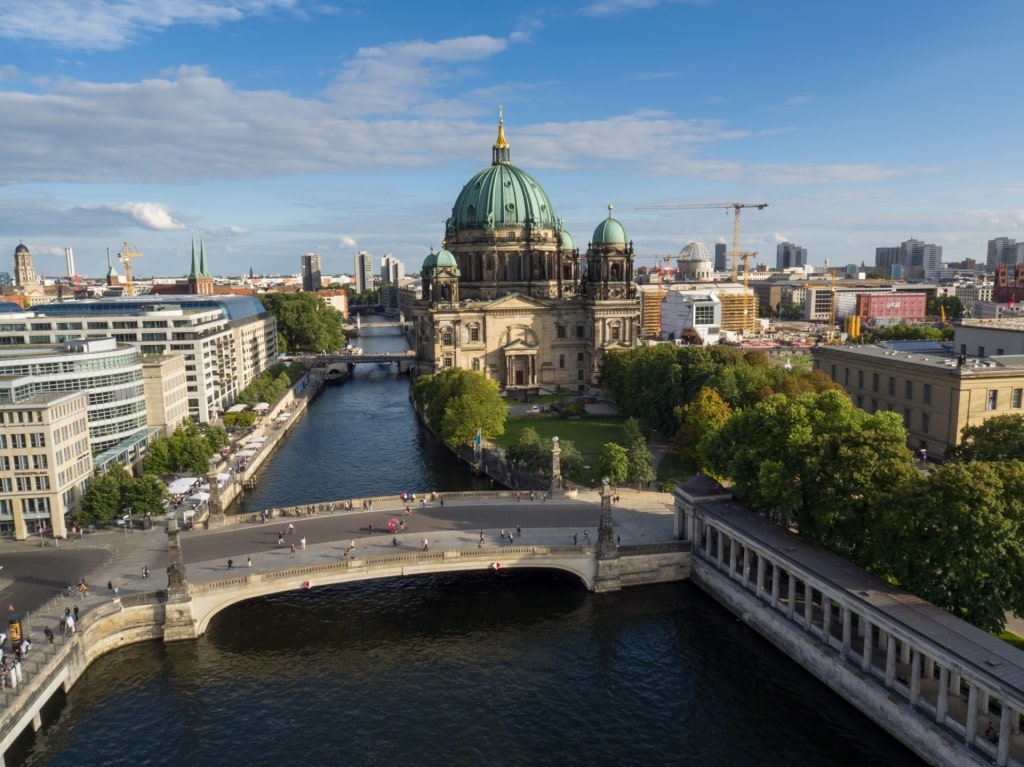
Berlin, Germany
German architects such as Gropius, Taut, and Mies van der Rohe laid the foundations of modern architecture. Their work is found throughout Berlin, alongside many other even more modern works.
Combining old and new is the Reichstag, where the 1890s original now has a contemporary glass dome added by Norman Foster in 1999. It’s symbolic of a city that rebuilt itself from the ashes of World War II.
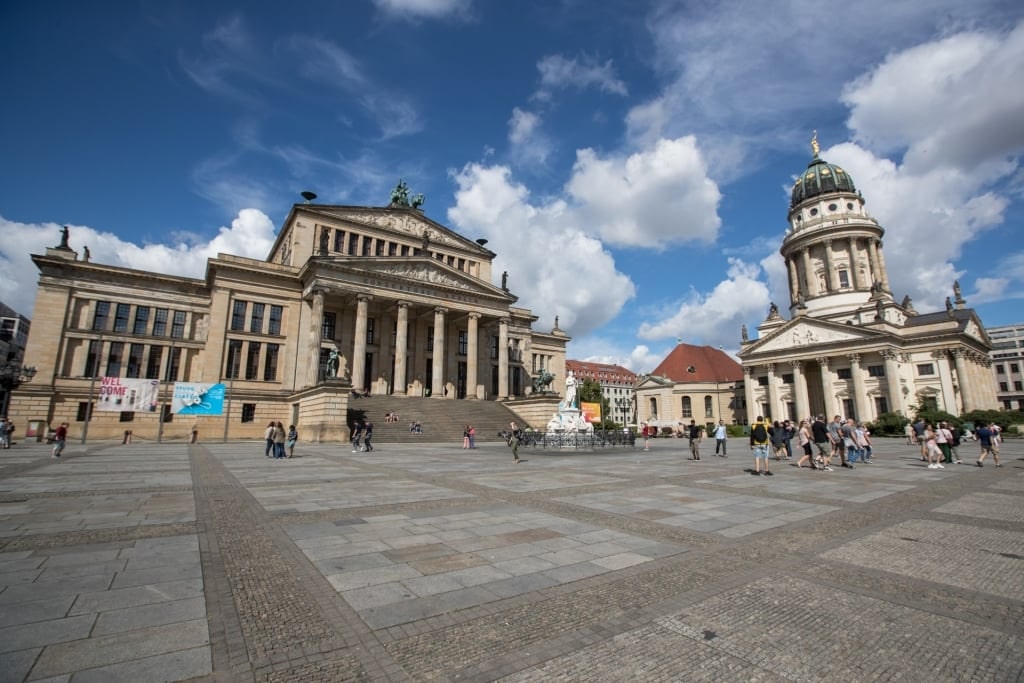
Gendarmenmarkt Plaza in Berlin, Germany
Major sights such as the Gendarmenmarkt Plaza, and the Brandenburg Gate showcase the older side. In sharp contrast are futuristic structures including the Cube on Washingtonplatz, or the Europacity complex.
Of course, much of Berlin’s reputation for the avant garde comes from its culture. For a taste of one of the best art cities in the world, take a street art tour, or visit galleries such as Contemporary Fine Arts (CFA), and the Museum of the Present.
San Francisco, California
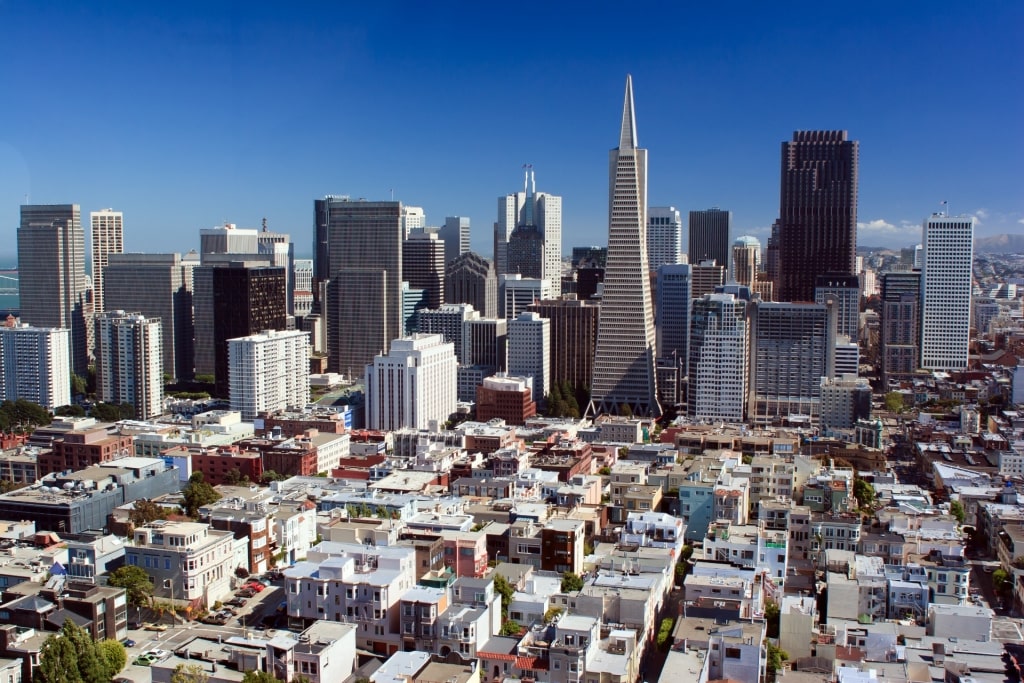
San Francisco, California
With companies such as Apple, Google, and Facebook headquartered there, San Francisco shapes the modern world. No surprise, really, from a city where jeans were invented, not to mention the world’s first jukebox.
Its steep streets saw the running of the world’s first cable car. In 2004, it was the first city in the world to allow same sex marriage.
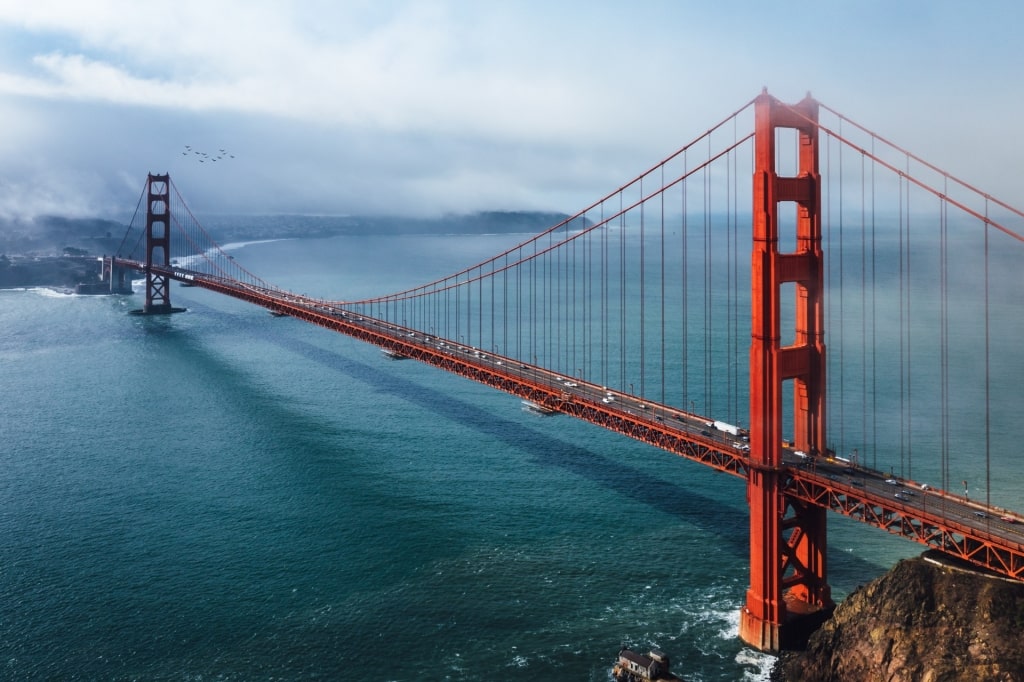
Golden Gate Bridge in San Francisco, California
All these firsts, and many others, help give San Francisco its reputation for innovation and opportunity. The city itself sits in a beautiful natural setting, with a bay made even more striking by the amazing Golden Gate Bridge, one of the many things that California is known for.
Filled with young creatives, San Francisco supports a thriving food and arts scene. You’ll discover all the latest at Union Square, Fisherman’s Wharf, The Ferry Building, and Chinatown.
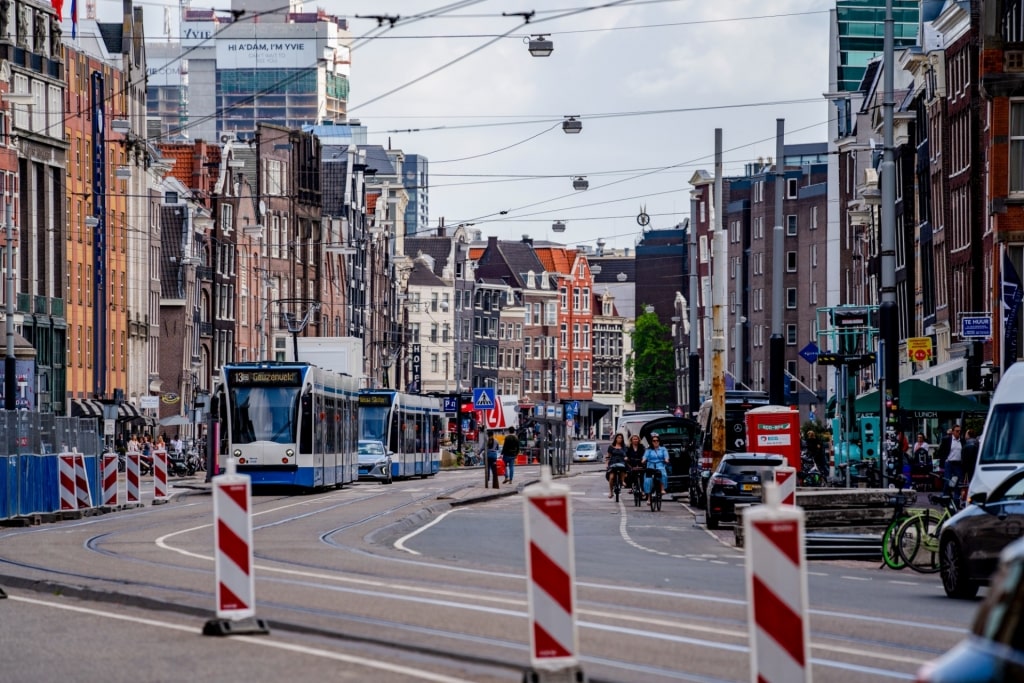
Amsterdam
Has this list of the most futuristic cities in the world inspired you to visit some or all? Then browse our worldwide itineraries to start planning a cruise that will make your dreams come true.
